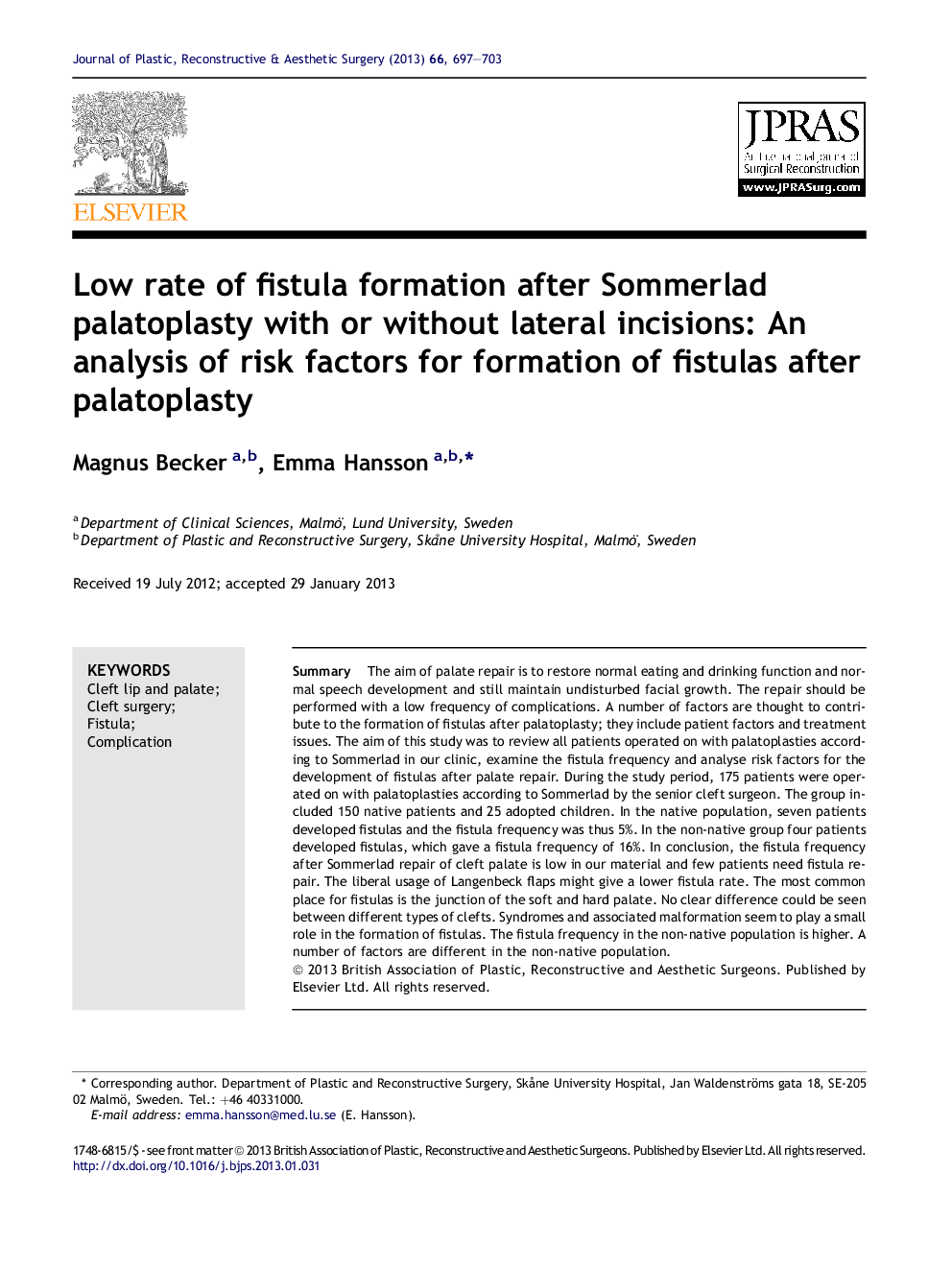| Article ID | Journal | Published Year | Pages | File Type |
|---|---|---|---|---|
| 4117848 | Journal of Plastic, Reconstructive & Aesthetic Surgery | 2013 | 7 Pages |
SummaryThe aim of palate repair is to restore normal eating and drinking function and normal speech development and still maintain undisturbed facial growth. The repair should be performed with a low frequency of complications. A number of factors are thought to contribute to the formation of fistulas after palatoplasty; they include patient factors and treatment issues. The aim of this study was to review all patients operated on with palatoplasties according to Sommerlad in our clinic, examine the fistula frequency and analyse risk factors for the development of fistulas after palate repair. During the study period, 175 patients were operated on with palatoplasties according to Sommerlad by the senior cleft surgeon. The group included 150 native patients and 25 adopted children. In the native population, seven patients developed fistulas and the fistula frequency was thus 5%. In the non-native group four patients developed fistulas, which gave a fistula frequency of 16%. In conclusion, the fistula frequency after Sommerlad repair of cleft palate is low in our material and few patients need fistula repair. The liberal usage of Langenbeck flaps might give a lower fistula rate. The most common place for fistulas is the junction of the soft and hard palate. No clear difference could be seen between different types of clefts. Syndromes and associated malformation seem to play a small role in the formation of fistulas. The fistula frequency in the non-native population is higher. A number of factors are different in the non-native population.
